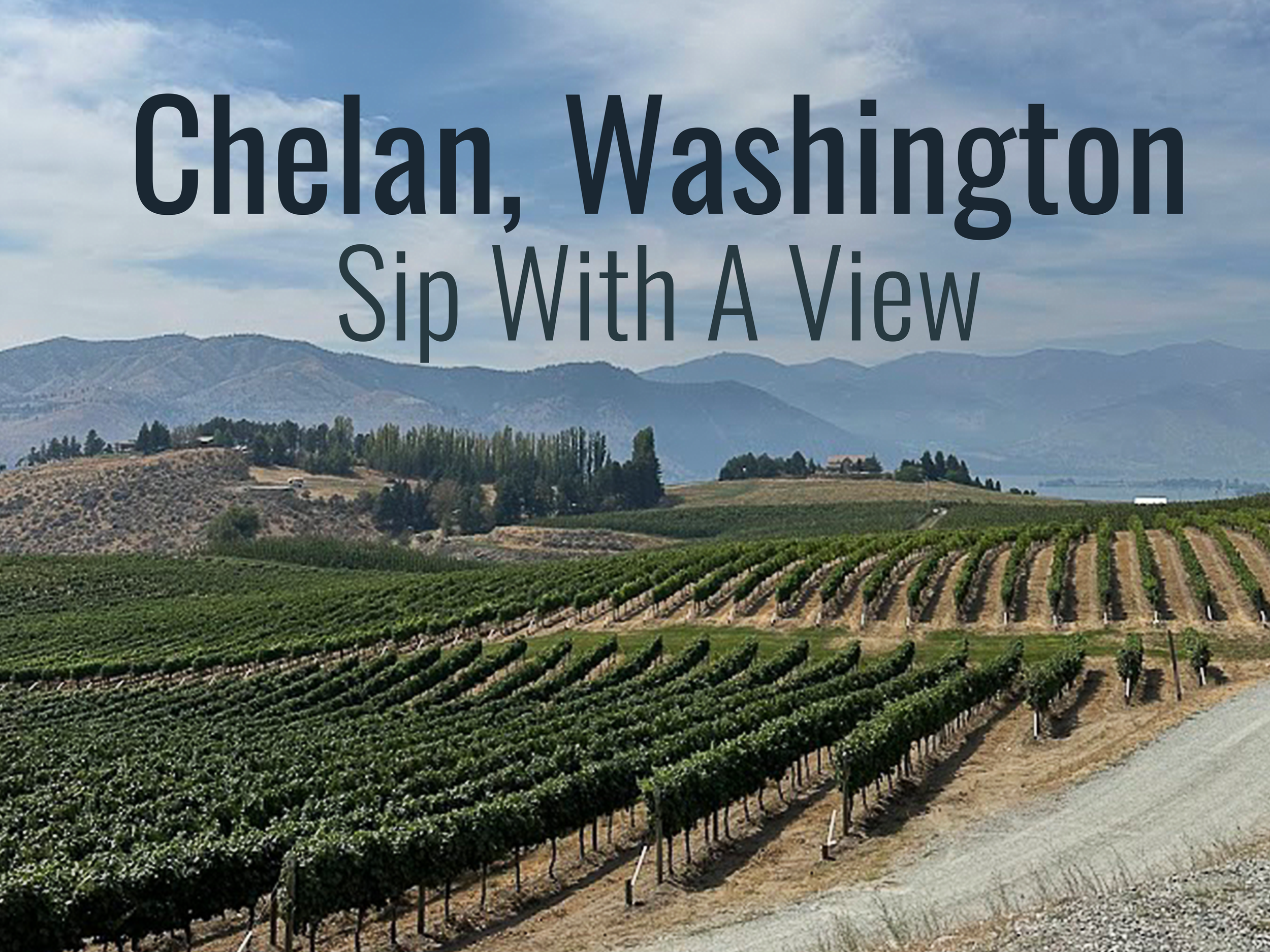Chelan, Washington: Sip With a View
By Cole Swanson
August 2, 2024
CHLEAN, WA – The town of Chelan (Sh-laan), Washington state is a beautiful place to unwind, especially in the summer, even when the August heat hits you the moment you open your car door on arrival. About three hours east of Seattle, the quaint town in North-central Washington surrounds a glacial lake of the same name – turquoise and translucent where boats buoy and swimmers cool off.
On the foothills of the mountains that enclose this vacation destination are tasting rooms in abundance, such as Tsillan Cellars and Cairdeas Winery. These two, along with the 41 others in this area, serve wines made from grapes grown within the Lake Chelan American Viticultural Area (AVA) and those from other sub-AVAs of the Columbia Valley AVA.
AVA, or American Viticultural Area, is a title specific to the United States. It is awarded to grape-growing regions within an area whose climatic influences are unique to others around it, and therefore provide differentiating qualities in the grapes. The same goes for sub-AVAs. These are smaller regions of the umbrella that differentiate from the whole.
As of 2024, there are a total of 21 AVAs in Washington state.
The wines of the Lake Chelan AVA stand apart from the rest of the Columbia Valley thanks to distinct climatic impacts, allowing it to grow grapes for which Washington state is not normally known.
Of all the tasting rooms in Chelan, I only had time to visit five during my two-day vacation. The most notable, in my opinion, were Tsillan Cellars, pronounced like Chelan, and Cairdeas Winery (Kar-diss). Their white and reds were discernible from most others I’ve tasted in Washington.
Perhaps it was the Tuscany-inspired design of Tsillan Cellars that captured my heart. I’d say anything with a terracotta edifice will do that. But all their wines – the reds, whites and the rosé – also caught my attention. Overall, they presented minerality and prickly sensations — largely due to vineyard soil composition and proximity to the lake — which added great texture and complexity. Their estate white wines stood out the most, and their dry Riesling and Gewürztraminer blew me away with their distinct florality and acidity, and I could have easily enjoyed a bottle of either on that hot day.
My next stop was Cairdeas Winery. I had been advised to go by everyone who knew about my trip. I’m glad I did. More modern than Tsillan Cellars, the patio on which I first lounged, before the heat pushed me inside, was surrounded by estate vines, trellised low enough to see the horizon drawn by the lake. Instead of the whites stopping me in my tracks, it was the reds, specifically the 2021 Concrete Syrah made from whole cluster grapes. It reminded me of Passover dinner at my parent’s house. The complexities were unique – herbaceous, salinic, and savory. It was a wine I wanted to continue to drink so I could detect all of its unexpected qualities.
It was after tasting at these two wineries that I understood why Lake Chelan stands as one of 18 sub-AVAs of the Columbia Valley AVA – where about 99 percent of all Washington state wine grapes are grown; the other one percent being in the Puget Sound AVA.
Unlike most other AVAs of the Columbia Valley, Lake Chelan AVA is able to grow cooler climate grapes, such as Pinot Noir, as well as bright, dry Riesling and medium-bodied Syrah. This is the result of the harmony of the “lake effect,” planting vines at higher elevations, and unique soils.
Generally speaking, the entirety of the Columbia Valley AVA – Lake Chelan AVA included – has semi-arid warm climate with little rainfall that requires irrigation. This is why Washington is known for its bold, ageable, juicy reds like Cabernet Sauvignon and Merlot, rather than Pinot Noir.
However, Chelan receives breezes from the lake while vines are planted at higher elevations than notable sub-AVAs of the Columbia Valley, such as Horse Heaven Hills and the Yakima Valley.
These factors help to cool the vineyards and elongate harvest, allowing for the success of Pinot Noir and vibrant Riesling.
However, the Lake Chelan’s non-water-retentive granite soils predominate alongside volcanic pumice to aid ripening in the cooler climate, leading to wines that are nutrient rich and can be fuller-bodied despite growing temperatures that would otherwise result in lighter style wines.
The non-water retentive soil known as “glacial till” is specifically helpful for aiding ripening. This soil type is of coarse, sandy sediment and gravel, which is the result of alpine glaciers cutting through and forming Chelan over millions of years.
In addition to retaining heat, it requires vines to maneuver to find water in the earth below, creating rustic and mineral flavors. The eruption of Glacier Peak about 13,000 years ago provided pumice.
Pumice is nutrient-rich and holds water well but drains quickly due to its sponge-like holes that help to aerate the soil. This ensures the vines don’t become water-logged.
The combination of these three climatic influences is what provides the wines from this sub-AVA with more minerality and earthier qualities than those of the rest of the Columbia Valley, which are juicer and fuller-bodied.
Should one prefer a destination winery in Washington state that is surrounded by more than just farmland, Lake Chelan has you covered. The small-bonded town contrasts the rest of the Eastern Washington wine region. Modern, but still family-owned, shops line the mile-long main street and sit beside bars and restaurants, some of which are open late enough for the night owls. Everything is walkable, and as I passed the many visitors and residents I understood the appeal of slowing down and enjoying the beauty around me – in nature and in lifestyle. About five miles in any direction are tasting rooms with views of the lake, where I sipped and contemplated early retirement.


